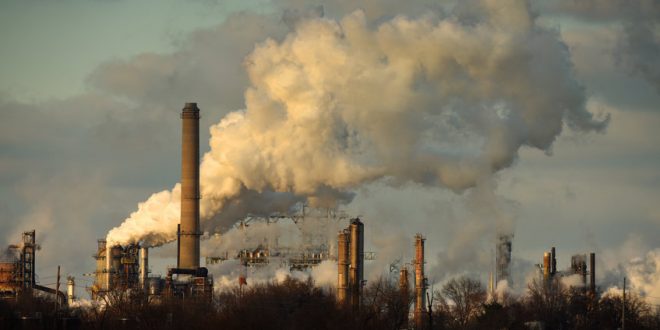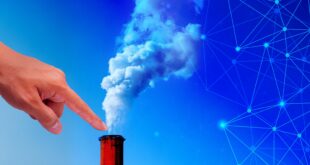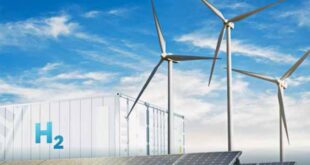Amid the global transition to clean fuel, conventional oil and gas companies appear to have found a way to stay relevant: blue hydrogen.
Hydrogen, typically produced by breaking methane inside liquefied natural gas into hydrogen and carbon, is labeled as blue, when all carbon emissions from this process are captured, stored, or reused.
This decarbonized hydrogen offers the oil and gas companies a path toward clean fuels while drawing on their existing gas production, transportation and storage facilities.
Major South Korean conglomerates — SK and Posco — have jumped into the blue hydrogen business and plan to invest billions of dollars.
However, experts warn that though blue hydrogen emits zero carbon, the decarbonized hydrogen isn’t as clean as it seems, as its feedstock natural gas emits methane — one of the most potent greenhouse gases — throughout the entire lifecycle.
According to the Committee on Climate Change, an independent public body that advises the UK government on climate change, the value chain of natural gas — from its drilling, production, processing, transportation and distribution — emits methane due to combustion, unintentional leakage from containers or purposeful venting.
When all these prior stages of natural gas are included, 1 to 5 kilograms of greenhouse gases are emitted per kilogram of blue hydrogen.
“Natural gas companies don’t want to talk about these things. But the truth is, methane is 28 times more powerful than carbon at trapping heat and warming the Earth,” said Lee Seung-hoon, director at H2Korea, a hydrogen think tank under the Ministry of Trade, Industry and Energy.
In an opinion piece for the Hill, Robert Howarth, professor of ecology and environmental biology at Cornell University, said combined total greenhouse gas emissions of blue hydrogen exceed that from using either coal or natural gas directly and that emissions of leaked methane are rife throughout the process.
A recent report from the United Nations Environmental Program highlighted that pound for pound, methane is 86 times more powerful a greenhouse gas than carbon is over 20 years, and 25 percent of the global warming experienced by the Earth in recent decades has been driven by methane.
Criticism that blue hydrogen eventually facilitates the production of fossil fuel has propelled a global movement to produce carbon-neutral natural gas. The low-carbon natural gas, while not mainstream yet, captures greenhouse emissions through the entire lifecycle from its upstream supply, liquefaction, production, shipping, regasification and downstream supply.
SK E&S, the nation’s No. 1 city gas provider, and Korea Midland Power, aim to invest 5.3 trillion won ($4.6 billion) and establish a 250,000-ton blue hydrogen production facility in Boryeong, South Chungcheong Province, by 2025.
“The facility will produce blue hydrogen with ‘carbon-free’ natural gas imported from Australia. The carbon-free natural gas captures all greenhouse gas emissions throughout its entire value chain,” an SK E&S official said.
Posco, the country’s leading steelmaker aims to produce 500,000 metric tons of blue hydrogen with global partners by 2030. Posco has yet to decide on its partners. It’s unknown whether the steelmaker will use typical natural gas or a low-carbon one.
In 2018, Korea emitted 727.6 million tons of greenhouse gases, a 149 percent surge from 1990, with methane accounting for 3.8 percent.
 Iran Energy News Oil, Gas, Petrochemical and Energy Field Specialized Channel
Iran Energy News Oil, Gas, Petrochemical and Energy Field Specialized Channel




